Introduction
A low oil pressure light on garden equipment is an important warning that often goes unnoticed. Many gardeners are unaware of its importance, which can lead to equipment failure and costly repairs. This article will provide a detailed guide to understanding what a low oil-pressure light means.

Recognizing the importance of this warning light can prevent sudden breakdowns and extend the life of your tools. A few simple maintenance steps can save you from expensive repairs and help your equipment perform at its best. Understanding the reasons behind low oil pressure lights gives you the power to fix problems before they escalate. With this knowledge.
you can ensure that your garden equipment is reliable and ready for any gardening task how it affects your gardening tools, and how to make sure your gardening tools are up to date. Go easy all season long. By heeding this warning light and maintaining your equipment, you’ll enjoy a more efficient, worry-free gardening experience.
What is a low oil pressure light?
A low oil pressure light is a warning indicator found on engine-powered garden equipment, such as lawnmowers, tillers, and chainsaws. This light indicates a problem with engine oil pressure, which is necessary to keep all engine parts lubricated and functioning properly.
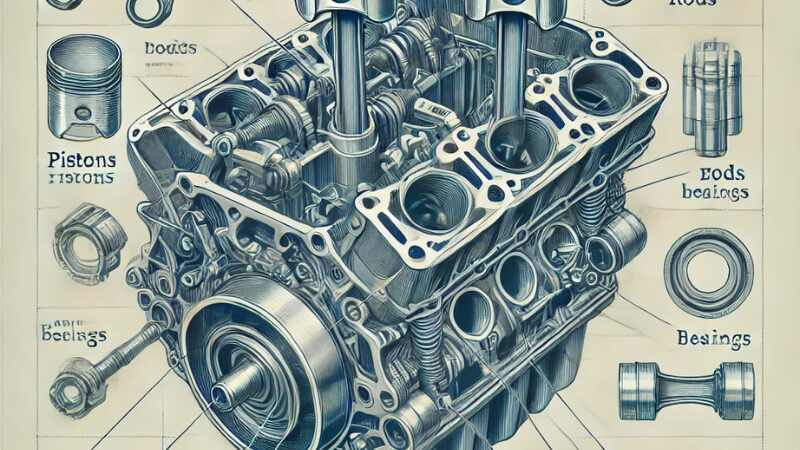
The low oil pressure light signals an issue that could lead to engine damage if not promptly addressed. This warning indicates insufficient oil flow, which is essential for cooling and reducing friction in the engine’s moving parts.
When the low oil pressure light comes on, it’s typically due to low oil levels, clogged filters, or internal engine wear. Recognizing this signal and understanding its causes is vital for extending the life and performance of your garden equipment.
The engine can quickly overheat and run down without sufficient oil pressure, causing poor performance and possible damage.
When this light comes on, it usually means an oil flow problem. Low Oil pressure light keeps engine components lubricated, preventing friction and heat build-up. Understanding the reasons behind this warning light and taking immediate action can help you avoid costly repairs.
Why Low Oil Pressure Light Matters for Garden Equipment.
Oil is the lifeblood of any engine-powered equipment. It helps lubricate moving parts, reduce friction, and keep the engine cool. When oil pressure is low, the engine is at risk of damage because there is not enough lubrication to reduce heat and friction resulting from the operation.
The low oil pressure light serves as a critical warning to prevent engine damage in garden equipment. Without proper oil pressure, essential engine components can overheat and experience excessive wear, leading to costly repairs.
This is especially important for garden machinery, which often operates in challenging conditions. Paying attention to the low oil pressure light ensures your equipment stays efficient and lasts longer, saving you time and money in the long run
Maintaining proper oil pressure is even more important for garden equipment, which often operates in harsh conditions—dust, moisture, and frequent starts and stops. Ignoring a low oil pressure light can cause:
Increased engine wear: Lack of lubrication causes metal components to grind together, resulting in premature wear. When the low oil pressure light appears, it often signals insufficient lubrication, causing metal components to grind directly against each other.
This friction generates excessive heat and damages essential engine parts, resulting in rapid wear. Ignoring the low oil pressure light can drastically shorten the lifespan of your garden equipment
Overheating: Without adequate oil flow, the engine can overheat, causing seals to break and parts to break. The low oil pressure light is an early warning of inadequate oil flow, which can cause the engine to overheat due to insufficient lubrication.
Overheating leads to broken seals, warped parts, and even catastrophic engine failure. Addressing the low oil pressure light promptly ensures that your equipment remains reliable and safe to use
Costly repairs: Low oil pressure can cause engine failure, often requiring expensive repairs or complete equipment replacement. Ignoring the low oil pressure light can lead to catastrophic engine damage, often requiring costly repairs or total equipment replacement.
These expenses far outweigh the time and cost of regular maintenance. Addressing the low oil pressure light early can save you significant money and ensure your gardening season runs smoothly
Common Causes of a Low Oil Pressure Light:
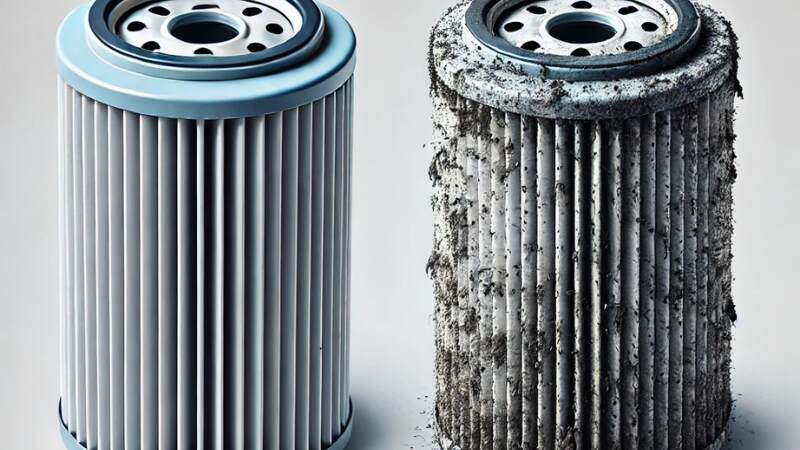
When the low oil pressure light comes on, it is important to identify the underlying cause. Here are some common reasons why this warning light may appear on garden equipment:
1. Low oil level: The simplest explanation is that the oil level in your equipment is too low. This can be caused by regular oil usage, leaks, or evaporation.
2. Dirty or clogged oil filters: Oil filters remove contaminants from the oil for optimal engine performance. Over time, filters can become clogged, restricting oil flow and reducing pressure.
3. Faulty Oil Pressure Sensor: Sometimes, the problem is with the sensor itself. A malfunctioning sensor can trigger a warning light even when oil pressure is sufficient.
4. Degraded Oil: Oil degrades over time, especially when subjected to high engine temperatures. Old oil loses its lubricating properties, which can cause a pressure drop.
5. Internal engine wear: As garden equipment ages, engine parts wear, resulting in a drop in oil pressure. This is more common in heavily used or older machinery.
By identifying these problems, you can take appropriate action to maintain oil pressure and avoid further complications.
Diagnose and troubleshoot low oil pressure light problems
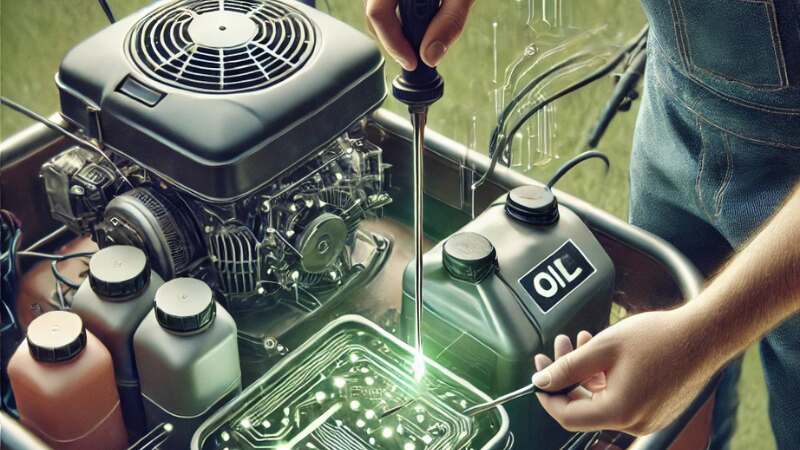
When you see a low oil pressure light on your garden equipment, follow these steps to diagnose the problem:
Shut down equipment immediately: Running equipment with low oil pressure can seriously damage the engine. Turn it off to prevent further complications.
Inspect the oil filter: If you haven’t changed the oil filter recently, it may be clogged. A quick inspection or replacement can help fix the problem.
Check oil quality: Check oil color and consistency. Old, degraded oil often looks dark and muddy.
Inspect for Leaks: Check equipment for any visible oil leaks. A leak around the seal or oil pan can cause the oil level to drop and trigger the warning light.
Check the oil pressure sensor: If you suspect that the sensor may be faulty, you can check it with a pressure gauge or if you are not sure, consult a professional. By systematically addressing these areas, you can identify the root cause of the low oil pressure light and take appropriate action.
How to Fix Common Low Oil Pressure Light Problems
Once you’ve identified the problem, here are some possible solutions to solving low oil pressure light problems:
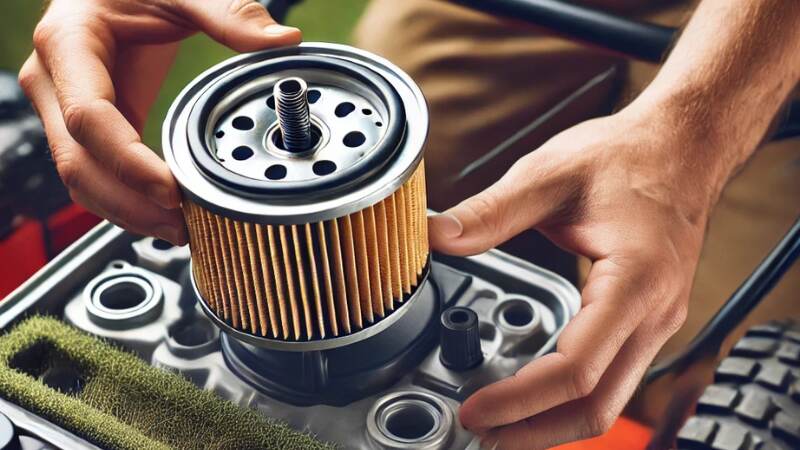
Refilling the oil level: If the oil level is low, simply add oil according to the manufacturer’s specifications. Be careful not to overfill, as too much oil can also cause pressure problems.
Change or clean the oil filter: A clogged oil filter prevents flow, so change it regularly. For some devices, cleaning the filter may be sufficient.
Change the oil: If the oil is old, damaged, or contaminated, a fresh oil change can restore proper lubrication and pressure. Be sure to use the oil recommended for your equipment.
Replace a faulty sensor: If the oil pressure sensor is causing a false alarm, replace it with a new one. This is a relatively inexpensive fix that can prevent future problems. Fix any leaks: If you find leaks, tighten loose bolts or replace seals as needed. A persistent leak may require professional help.
PRECAUTIONARY MAINTENANCE TO AVOID LOW OIL PRESSURE LIGHT
Prevention of low oil pressure problems starts with regular maintenance. Here are some precautions to keep your garden equipment running smoothly:
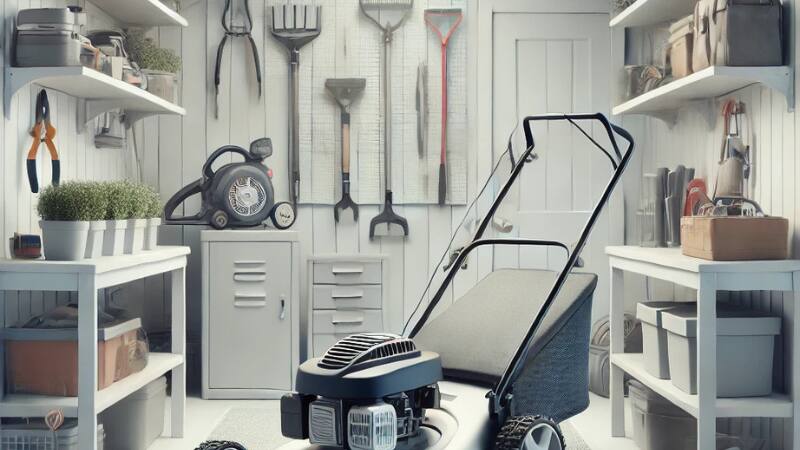
1. Check the oil level regularly: Make it a habit to check the oil level before each use, especially if you are using the equipment frequently.
2. Follow an oil change schedule: Change the oil and filter according to the manufacturer’s recommendations. Fresh oil and a clean filter are essential to maintain optimum oil pressure.
3. Use a high-quality oil: Invest in a high-quality oil designed for garden equipment. This can improve engine performance and reduce the chance of compression problems.
4. Store equipment properly:
Proper storage can help prevent leaks and protect seals.
5. Do a seasonal inspection: Before the gardening season starts, do a thorough inspection of your equipment. This includes checking for leaks, worn seals, and other potential problems that could be causing low oil pressure.
By being proactive with these maintenance tips, you can prevent the low oil pressure light from becoming a regular problem.
Choosing the Right Oil for Your Garden Equipment
Not all oils are created equal, and it’s important to use the right type of oil to maintain oil pressure. Things to consider when choosing an oil for your garden equipment:
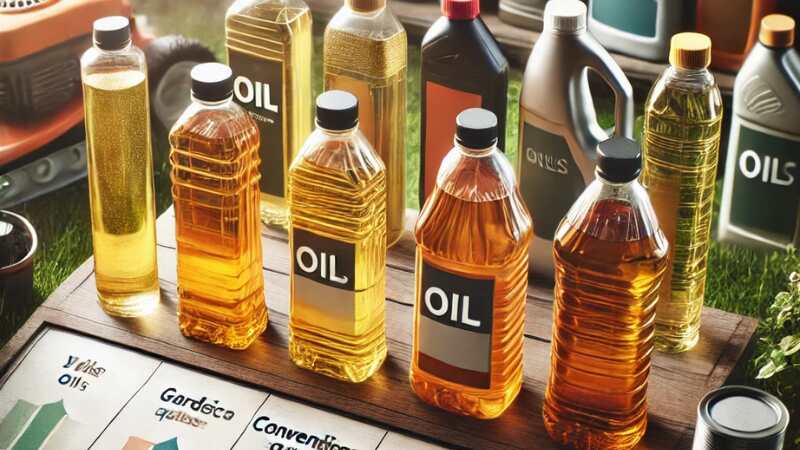
Check Viscosity: Different equipment requires specific oil viscosity, so consult your owner’s manual for recommendations.
Consider synthetic vs. conventional oils: Synthetic oils generally perform better in extreme temperatures, making them ideal for frequently used equipment.
Choose brands recommended by the manufacturer: Many manufacturers recommend specific brands or types of oil for optimal performance.
Choosing the right oil helps maintain proper pressure, reduces engine wear, and supports efficient operation.
Tips for a smooth gardening season with well-maintained equipment
A well-maintained garden tool not only makes gardening more enjoyable but also prevents unnecessary expenses. Here are some additional tips to ensure a successful gardening season:
Clean equipment regularly: Dirt and debris can affect engine performance. Clean your equipment after each use, especially around air filters and moving parts.
Store tools safely: Proper storage prevents moisture build-up and extends the life of your tools.
Inspect for wear and tear: Check belts, seals, and other components regularly for early signs of wear.
By following these steps, you’ll be well prepared for a productive gardening season with minimal interruptions from equipment issues.
The role of oil quality in preventing low oil pressure light problems
Oil quality plays an important role in maintaining proper engine performance and avoiding low oil pressure warning lights on garden equipment. High-quality oil not only provides the necessary lubrication, but also contains additives that prevent rust, oxidation, and sludge build-up.
Low-quality oils or oils that are past their useful life can lose viscosity and reduce their ability to protect engine components, causing friction, overheating, and stress problems.
For garden tools that are used seasonally or exposed to dirt and moisture, it is important to use a quality oil with the correct specifications. Over time, oil breaks down due to heat and pollutants. Old or degraded oil no longer flows easily, possibly causing blockages that reduce oil pressure and trigger the warning light.
That’s why regular oil changes are important. Changing the oil according to the manufacturers’ recommendations ensures that the equipment is operating with clean, efficient oil. Synthetic oils can be an excellent option, especially for equipment that faces high operational demands, as they are formulated to maintain viscosity even in extreme temperatures.
It may also be beneficial to understand the difference between synthetic and conventional oils. Synthetic oils are designed to provide better protection, resist degradation, and handle extreme temperatures more effectively than conventional oils.
Although synthetic oil can be more expensive, it can save costs in the long run by reducing engine wear and preventing frequent low-oil pressure problems. Conventional oil, although effective, may require more frequent changes, especially if the equipment is heavily used or exposed to harsh conditions.
To ensure optimal performance, always check oil level and quality before use and replace degraded oil. Following this routine can prevent low oil pressure light problems, reduce engine wear, and help ensure efficient operation throughout the gardening season.
Investing in a high-quality oil and monitoring its condition is a simple yet effective way to extend the life and functionality of your garden equipment.
Signs Your Garden Equipment Needs Urgent Care
Knowing when to perform urgent garden equipment maintenance can prevent major problems like low oil pressure and engine damage. In addition to the low oil pressure light, there are several warning signs that indicate your equipment needs immediate attention. Being aware of these symptoms and acting quickly can save you time, money, and trouble.
A common symptom is unusual engine noise, such as knocking or rattling. These sounds often suggest insufficient lubrication, which could be due to low oil pressure or oil failure. Addressing these noises as soon as possible can prevent damage to engine components.
Another sign to look for is excessive smoke or a burning smell coming from the engine. These could be signs of overheating, oil leaks, or burning oil inside the engine—all of which are problems that require immediate attention to prevent serious damage.
Garden equipment that struggles to maintain consistent power or stalls frequently may be dealing with insufficient oil pressure or other internal problems. Low oil pressure affects engine performance, and if the warning light is accompanied by a loss of power, this is a sign that maintenance is overdue.
are also important for leakage monitoring. Oil leakage around the seal, gasket, or oil pan lowers the oil level and pressure, causing a low oil pressure light. Check your equipment before and after use for signs of oil leaks and tighten or replace parts as needed.
Regularly inspecting your garden tools for these warning signs can help you catch minor problems before they lead to major, expensive repairs. A proactive maintenance approach, including paying attention to abnormal signs, can ensure your equipment stays in top condition, extending its lifespan and reliability throughout the gardening season.
FAQs About Low Oil Pressure Light On Garden Equipment
Q: How often should I check the oil in my garden equipment?
A: Ideally, check the oil level before each use, especially during the gardening season. Regular checks help prevent unexpected low-oil situations that could harm the engine.
Q: Can I continue to use the equipment if the low oil pressure light is on?
A: No, it is best to stop using the equipment immediately and investigate the problem to prevent engine damage. Continuing to operate with low oil pressure can lead to severe and costly damage.
Q: What type of oil should I use for my garden equipment?
A: It’s recommended to consult your equipment’s manual for specific oil recommendations, as different engines may require particular viscosities. Generally, high-quality oils suited for small engines are ideal, and synthetic options can offer added durability in extreme conditions.
Q: How often should I change the oil in my garden equipment?
A: Most manufacturers suggest changing the oil every 25-50 hours of operation or at the start of each season. If you use the equipment heavily or in challenging conditions, changing it more frequently may help protect the engine.
Q: What are some common signs that my garden equipment needs an oil change?
A: Signs include dark, gritty oil on the dipstick, a drop in engine performance, increased noise, or visible smoke from the exhaust. Checking the oil’s color and consistency regularly can help you determine if it’s time for a change to keep your engine running smoothly.
Conclusion
Understanding a low light and taking immediate action when it appears can save you from costly repairs and extend the life of your garden equipment. Regular maintenance, choosing the right oil, and proactive maintenance are the keys to a smooth, efficient gardening season.
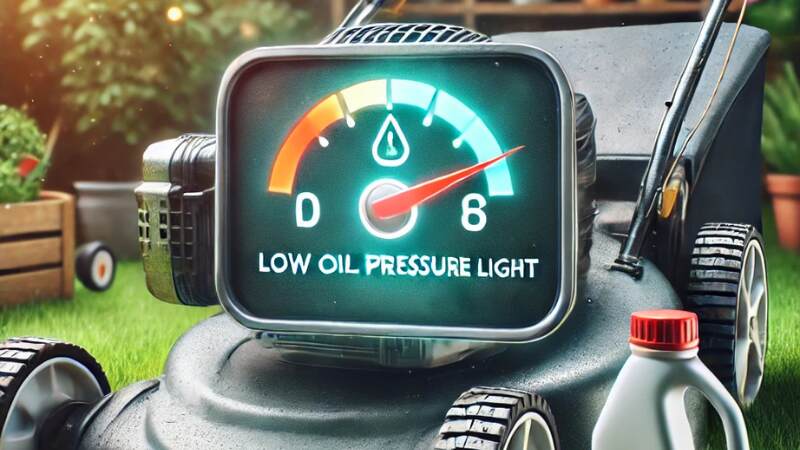
By addressing low light as soon as it appears, you can avoid costly breakdowns and significantly extend the life of your garden tools. Proactive maintenance, from choosing the right oil to routine maintenance, keeps equipment efficient and reliable.
These guidelines will help you maintain equipment longevity, ensuring a productive, uninterrupted gardening season. Following these steps means less downtime and more time enjoying a well-maintained garden free of unexpected problems with low-light fixture
By following these guidelines, you’ll keep your equipment in tip-top shape, ensuring a productive and enjoyable experience in the garden.


